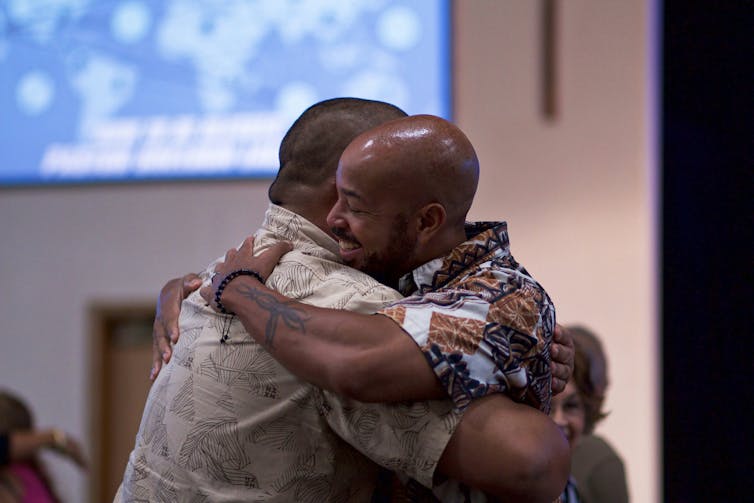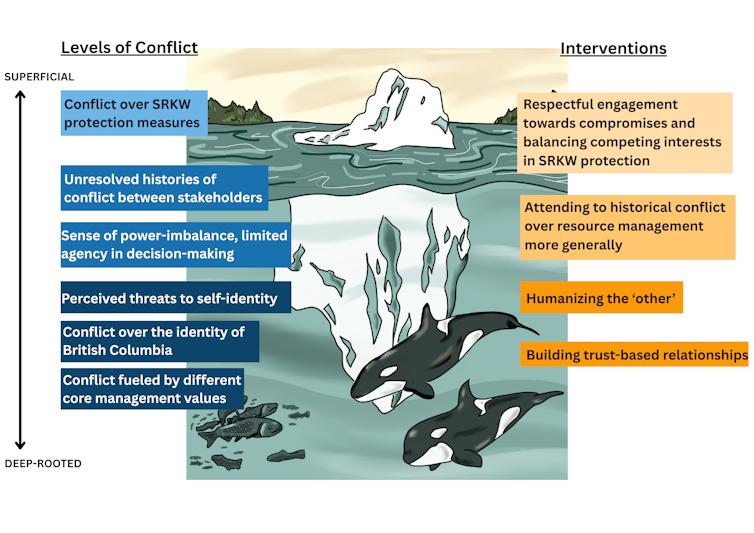Source: The Conversation – Canada – By Kristina K. Castaneto, Ph.D. Candidate in Social Psychology, Simon Fraser University
Picture this: One day while drinking your morning coffee, you are reminded of a friend from your past. You have not spoken to this person in some time, but you remember them fondly and wonder how they are doing. You pick up your phone and start typing a message to say “hello!” only to delete the message before hitting send. Has something like this ever happened to you? If so, you are not alone.
Past research in our lab found that up to 90 per cent of people report having an “old friend” — a friend they care about but with whom they have lost touch. And while most people say they would like to reconnect with an old friend, only about 30 per cent are willing to send a message, even with favourable circumstances, such as when the relationship did not end on bad terms, people think their friend wants to hear from them or people have their old friend’s contact information.
This reluctance to reach out to old friends is puzzling because a large body of research demonstrates that social relationships are a strong predictor of health and happiness. Indeed, having a larger and more diverse social network is associated with greater well-being.
Writing notes
So what makes it more likely for someone to reach out to an old friend?
In our new research, we investigated this question in two ways. First, we examined what people express in a “reaching out” note to an old friend, and whether some content can predict which notes are sent. For instance, are people more likely to send a note with a greater focus on the past, present or future?
To find out, we analyzed more than 850 reaching-out notes that we had collected in prior studies. Importantly, all participants wrote their note with a specific old friend in mind and were given the opportunity to send their note, but participants could choose to opt out. This allowed us to investigate whether notes that were sent included different types of content compared to the notes that were not sent.
Each note was coded on over 20 theoretically relevant dimensions such as the length of the note, emotion and the presence or absence of personal memories. Specifically, 12 of these dimensions were analyzed by a computer software called Linguistic Inquiry Word Count (LIWC) that can easily and objectively capture information like word count, time-orientation (past, present or future) and the amount of positive and negative emotion.
In addition, a team of trained human coders evaluated each note. The human coding team focused on 13 more subjective and complex topics which can sometimes be hard for computers to grasp, including whether the author shared specific memories involving their old friend or whether the author took responsibility for the fading friendship.

(Sarah Brown/Unsplash), CC BY
Revealing information
After all of this, we still weren’t able to predict which notes were more likely to be sent. But our substantial coding efforts revealed many interesting things about the content of reaching out notes. For instance, messages to old friends were often positive and focused on the present.
We used statistical regression analyses to look at the relationships between the various note features and reaching out behaviour — only six were statistically significant. However, these significant relationships were were small and inconsistent across our two participant samples.
This suggests that the content of a reaching-out note may not predict who chooses to send their message and who does not.
Who reaches out
With little insight gleaned from the content of the reaching-out notes, we pivoted our focus to ask: Who is most likely to reach out to an old friend?
To explore this question, we recruited 312 participants on campus and in public spaces around the city to complete a survey. The questionnaire began by asking participants to identify an old friend. This old friend was someone who the participants cared about but had not spoken to for a long time, who they believed would want to hear from them and someone for whom they had contact information.
Then, participants answered a number of questions about themselves, including items about their happiness, loneliness, personality, friendship satisfaction and friendship beliefs.
Near the end of the survey, we asked participants if they were willing to reach out to their old friend, and then we gave them two minutes to draft a short note to the friend they previously identified. After the two minutes had ended, we asked participants if they sent their message to their old friend.
Similar to past research, 34.2 per cent of participants chose to reach out. And while some of the personality dimensions and other variables predicted how willing participants said they would be to reach out to an old friend, only one variable — “friendship resiliency” — predicted whether people sent their message to their old friend.
The concept of friendship resiliency refers to the belief that friendships can remain even after long periods of low interaction and is now something we are studying in our lab.

(Erika Giraud/Unsplash), CC BY
Take the leap
If the thought of an old friend crosses your mind again, don’t get too caught up on crafting the perfect message — just reach out!
For example, you could reach out when a cafe is playing a song that you both used to enjoy or you see a meme that reminds you of them, or just to say a simple “Hey, it’s been too long! How are you?”
Our findings illustrate that reluctance to reach out to old friends is not experienced by one type of person, nor do reaching-out notes that are sent follow one type of script.
Hesitancy to reach out to an old friend is a common experience, suggesting that most people may be capable of reaching out if they are willing to take the leap to do so. Realizing this could encourage people to feel like they are capable of making the first move to reconnect.
![]()
The authors do not work for, consult, own shares in or receive funding from any company or organisation that would benefit from this article, and have disclosed no relevant affiliations beyond their academic appointment.
– ref. Reluctance to reach out to old friends is a common experience, but reconnecting can pay off – https://theconversation.com/reluctance-to-reach-out-to-old-friends-is-a-common-experience-but-reconnecting-can-pay-off-263079








